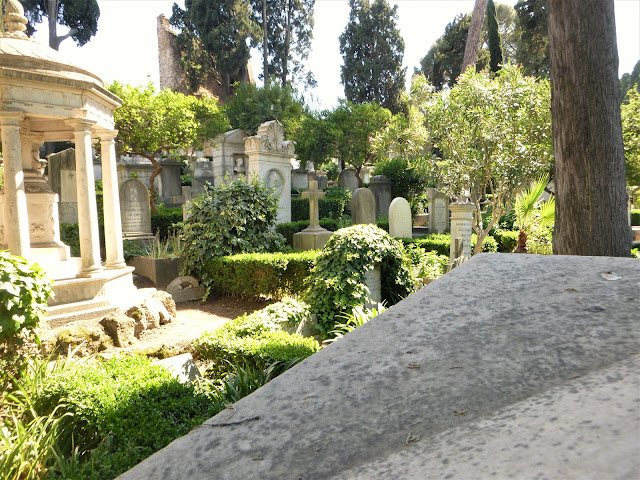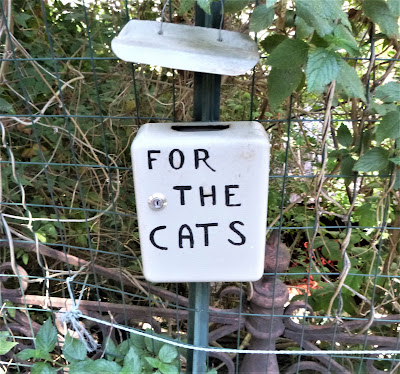One thing that is not obvious to somebody visiting from the U.S. is just how...Catholic Rome is. Even those who are not observant in a religious sense are almost universally Catholic from a cultural perspective. Coming from a part of the world where Protestants outnumber Catholics it required a little adjustment to my thinking.
Because of course when non Catholics were so rare, and the prospect of burying them alongside the loyal flock of the Papacy so unthinkable, there would have to be a Protestant Cemetery. Or to call it by its official name, Cimitero Acattolico.
Before the Reformation there would have been no need for one. The only religious minority worth mentioning was the Jews, and they had their own succession of burial grounds. Unknown in the earliest days, then in several Jewish catacombs. A Jewish cemetery in Trastevere was recently discovered dating to the Medieval period.
The first burial in the Protestant Cemetery dates to 1716. Exiled members of the Stuart court were at that time given dispensation by the Pope to be buried here, joined later by unfortunates whose Grand Tour had come to a sudden end. It has been in continuous use ever since, and even with a couple of extensions it is a crowded place.
What a marvelous place for a cemetery! It is adjacent to the Pyramid of Cestius and has as one boundary nothing less than the Aurelian Wall!
Here a finely executed memorial is set into a niche in the wall. If that is not original Roman opus reticulatum brick work it is a damned good imitation.
The oldest section of the cemetery runs right up to the edge of the pyramid. Actually that is set down a ways, no doubt reflecting the original ground level. You can just see peeking out one of the four pillars that at one time stood sentinel around the monument.
We shall ignore the well known graves - Keats and Shelley get plenty of attention. Here are a couple of interesting ones:
This is part of the family tomb of Thomas Jefferson Page. Yes, he was a Major in the Confederate Army. Prior to that he was an officer in the United States navy. His was an eventful life....fighting Japanese pirates, exploring South American rivers...his connection with Europe was that he was sent there during the Civil War to purchase naval vessels. He eventually did succeed at this, captaining the powerful iron clad C.S.S. Stonewall but arriving back in home waters just after the war ended. Man, what a bio!
Artists are well represented here. But this is actually the grave of a dancer, John Louis Piccoli, an American who died in 1955.
Historic sites in Rome tend to be very cat friendly. The Protestant Cemetery is no exception.
Cats don't spend much time pondering their own mortality.
And they don't spend any pondering yours.
Worth a visit if you are interested in the intersection of ancient and more modern history. They very much appreciate donations to keep the place up.








No comments:
Post a Comment